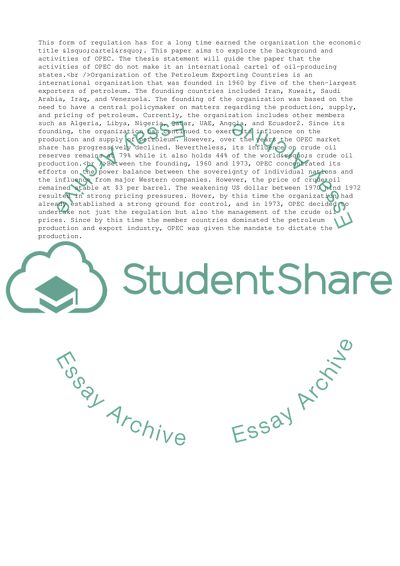Cite this document
(OPEC and the 1973 Oil Embargo Term Paper Example | Topics and Well Written Essays - 3000 words, n.d.)
OPEC and the 1973 Oil Embargo Term Paper Example | Topics and Well Written Essays - 3000 words. https://studentshare.org/business/1841747-opec-and-the-1973-oil-embargo
OPEC and the 1973 Oil Embargo Term Paper Example | Topics and Well Written Essays - 3000 words. https://studentshare.org/business/1841747-opec-and-the-1973-oil-embargo
(OPEC and the 1973 Oil Embargo Term Paper Example | Topics and Well Written Essays - 3000 Words)
OPEC and the 1973 Oil Embargo Term Paper Example | Topics and Well Written Essays - 3000 Words. https://studentshare.org/business/1841747-opec-and-the-1973-oil-embargo.
OPEC and the 1973 Oil Embargo Term Paper Example | Topics and Well Written Essays - 3000 Words. https://studentshare.org/business/1841747-opec-and-the-1973-oil-embargo.
“OPEC and the 1973 Oil Embargo Term Paper Example | Topics and Well Written Essays - 3000 Words”. https://studentshare.org/business/1841747-opec-and-the-1973-oil-embargo.


